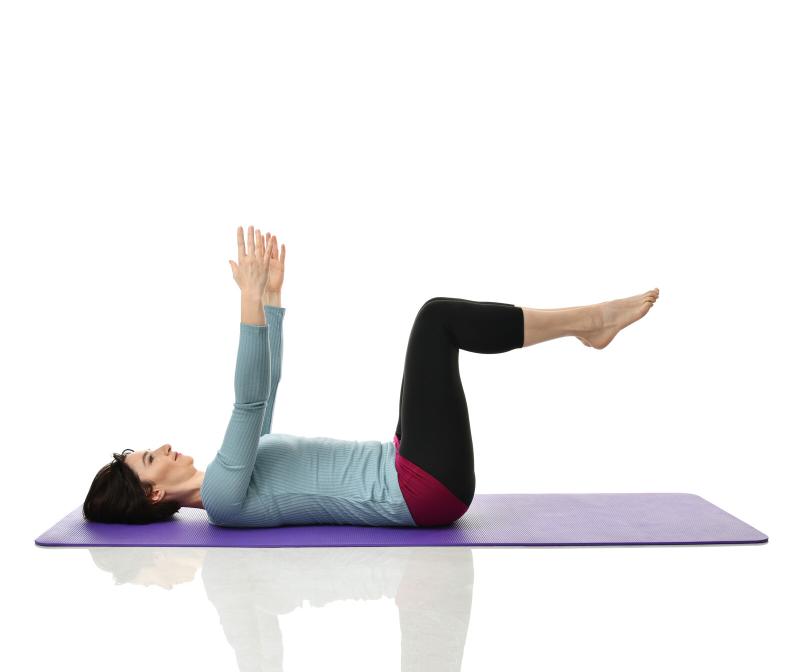After the birthing process, it’s important for new mothers to be kind to themselves and to be mindful of how their bodies feel. Postnatal exercises will help new mothers bring awareness and connection back to their bodies after all the physiological changes that occur during nine months of pregnancy. The goal is to heal and slowly realign as the postpartum period progresses so that women will feel comfortable and confident in their bodies again!
1) Slowly return to exercise
Before returning to an exercise routine, the general rule of thumb for new mothers is to wait six weeks and until they get the green light from their doctor. Once they get the go-ahead, they can start with gentle stretches, pelvic floor exercises (like kegels) and some moderate walking while listening to their bodies and resting when they need to.
2) Visit your pelvic health physiotherapist
Six weeks postpartum is the ideal time for a new mother to see her pelvic health physiotherapist who can check for abdominal separation (diastasis recti), assess the condition of the pelvic floor, and most importantly, provide key exercises to help get new mothers moving and realigned again.
3) Avoid crunches and plank exercises
If done incorrectly, crunches and planks can cause excess intra-abdominal pressure, which will exacerbate any abdominal separation. For new mothers, I suggest starting with lying face-up exercises that take away any buildup of pressure on the abdominal wall. I also suggest that mothers revisit their core breath and move slowly through exercises such as glute bridge exercises, single leg hip folds, and “dead bugs”.

Glute Bridge: Start lying down, face up, with feet hip distance apart. Inhale to prepare, then exhale as you push into your heels and raise your hips off the floor, keeping most of your rib cage still in contact with the floor. Pause at the top, then slowly lower with control back to the floor.

Single Leg Hip Fold: Start lying down, face up. Resting the upper body on the floor and placing your hands down by your sides, inhale as you lift both legs up and bend both knees to a 90-degree “table-top” position. Ensure knees are hip distance apart. Inhale as you lower one foot towards the floor than pause before you make contact with the floor. Exhale and then engage your abdominals to lift your leg back to the starting position. Repeat on the other side.

Dead Bug: Start lying down, face up. Lift both legs up and bend both knees to a 90-degree “table-top” position. Ensure knees are hip distance apart. Reach both arms up in the air and directly above your shoulders. Inhale as you lower and extend one leg and the opposite arm; pause, then exhale as you engage your abdominals to return the leg and arm back to the starting position. Repeat with the opposite leg and arm.
4) Work the posterior chain
Even when women try to be mindful of posture, having a newborn entails a lot of forward bending (like changing diapers and playing with the baby on the floor!). Hours of this will take its toll on the body, so to be preventative, I recommend that women strengthen the posterior chain (a group of muscles on the backside of the body) by focusing on exercises that target the upper back, lower back, glutes, and hamstrings. These include prone (lying face-down) shoulder retractions to strengthen muscles between the shoulder blades; prone superman (leg and opposite arm extensions) for upper and lower back; and modified deadlifts with dumbbells for hamstrings, glutes and the lower back
5) Hydrate, hydrate, hydrate
After birth, breastfeeding increases water requirements. Generally, you should consume between ½ and ¾ oz of water per pound of body weight. It is important for new mothers to drink even more water regularly, even before they feel thirsty, to help them feel and function their best. Additionally, exercise requires extra water for peak performance so women should keep a bottle of H20 close by and sip from it often.
Your body has just gone through some amazing changes and substantial rigours and it will bounce back! Your job now is to be kind to yourself with gentle and patient awareness of what you can do to restore strength and promote healing. These exercise tips will help you ease your way back into your fitness routine and prepare you for the physical challenges that motherhood has in store!









